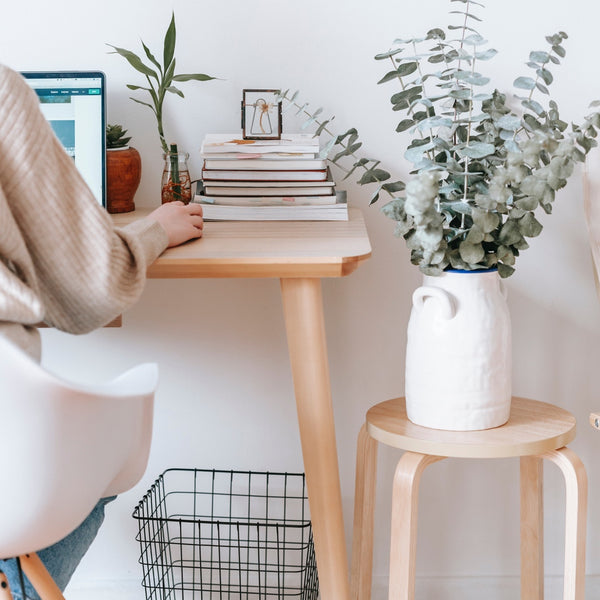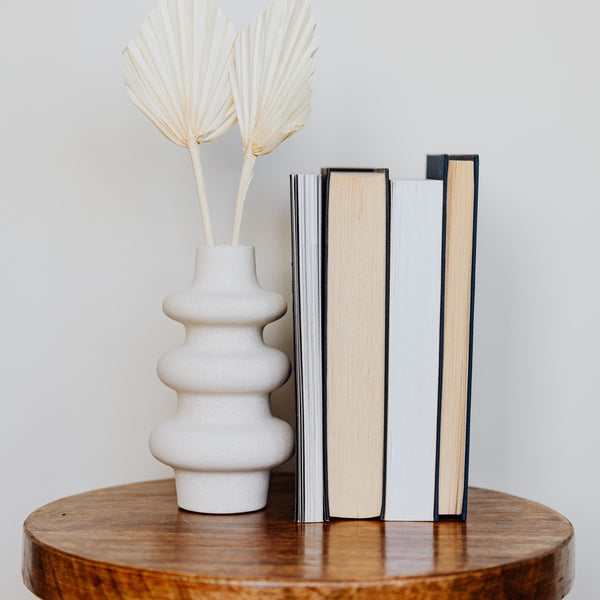5 Ways to Use Books as a Design Element

“A room without books is like a body without a soul.” – Cicero
In a world built on the communication through electronic devices, the transfer of information has been condensed and abbreviated. To accommodate limited screen space and abbreviated attention spans, we communicate in 140-character summaries. We have even developed a new language to pack more meaning into small spaces. LMK if something like this looks familiar: OMG RN IM SMH BC MY BFF IS ON FB W A TL;DR POST. NTY IMO LAME AF. BRB GTG TTYL!
Alongside e-books, cloud readers, and audiobooks, the art of the book is alive and well. Maybe it’s the weight of a book in our hands, the feel of turning pages, the smell of ink on paper, for many of us, there is something indescribably satisfying about the experience. Whether we are curling up with it or carrying it around with us, the relationship of a book with its reader is uniquely intimate.
A wonderful benefit of being a book reader is the collection that develops over the years. For a bibliophile, books are like family. Each volume sitting in its place on the shelf tells a particular story, holds a certain wisdom, connects us to a specific time in our lives. Collectively, our books tell our life story, our history, our interests and passions. In this way, our books deserve VIP status in our homes. We invite to consider books not simply for their function but to celebrate them as objects d’art.
Here are 5 ways to use books as a design element:
- Arranged by Color

One of the boldest statements you can make with your book collection is to arrange your shelves according to the color of the spines. There are several ways to do this, either horizontally or vertically, by spectrum or by color block. The easiest way to execute the arranging of your collection by color is to sort the books off the shelf. Start by grouping them by color on the floor, then position them on the shelves one color at a time, finessing the placement as you go.
- Arranged by Direction

We tend to pack our shelves tightly. Try instead, to arrange the books they hold loosely. Position some standing upright and some lying down, so that the spines alternate appearing vertical and horizontal. Punctuate books with decorative vases, bowls, bottles, or sculptures.
- Tall Horizontal Stack

It’s often challenging to fit our larger books amongst our regular-size books on the shelf. Here is one solution that creates a striking design element: hang a series of short shelves vertically on the wall and lay your larger books on them horizontally. The visual effect is a column of books. For added sleekness, turn the printed spines toward the wall, revealing only the paper color of the book block.
- On the Wall

Hanging cubical shelves on the wall at a 45° angle affords a unique opportunity for creativity. With the shelves themselves creating a latticework, stack books to the left and right at a 90° angle in the lower corner of each square space. Accent with bromeliads (air plants) to bring the arrangement to life.
- Way Up High

Cap your room off with crown molding made of books. One single bookshelf where the wall meets the ceiling can add a simple but bold accent to a study, den, or bedroom. This is a particularly good idea for books that are essential to your library, but do not need to be accessed regularly. Choose a single wall in the room, or on two walls opposite each other.



